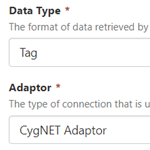
The CygNet Adaptor provides standardised access to the GE CygNet Data Collector, hiding the complexity of obtaining data from CygNet. This article describes how to configure the adaptor and perform tag discovery.
Read more

Search for Pages, Trends or Tags in Explorer, in the Search Page.
You can search for tags by description here, as well as by name.
Read more

The Sentinel Version Information Tool displays the list of currently installed Sentinel Processes, with their respective version numbers, as well as the currently installed Sentinel version information.
Read more

The Sentinel Password Configuration Tool is located on the Sentinel server and is used for changing the Sentinel Database password, the Active Directory (LDAP) password, and the Mail Server password, as well as the passwords for the Web Service and SMS via Web Service actions.
Read more

These are the default settings in the SentinelP2ServerConfig.xml configuration file.
Read more

These are the default settings in the configuration file, by default located at: C:\Program Files\ISS\BabelFish Sentinel\Configuration\SentinelConfig.xml Important: Do not edit any settings that are not listed here. Note: Some of the settings listed below are specific to various processes. ON THIS PAGE:Global groupUser Interface groupEngine groupReportingEngine groupDatabase groupService groupActions…
Read more

This series of articles explain how to change Sentinel configuration settings and use additional administration tools.
Read more

This articles describes how to fix some common problems associated with events in Sentinel.
Read more

The Stuck Value process determines whether test data remains the same for longer than a specified duration. If the data maintains a single value for longer than the duration limit, a Stuck Value state is reached and a Stuck Value event is raised.
Read more

The Steady State Detection evaluates up to four separate data inputs to determine whether the asset under surveillance has reached a steady state. This process can also evaluate whether data is continuously transient, that is: if it does not reach the steady state for longer a specified duration.
Read more

